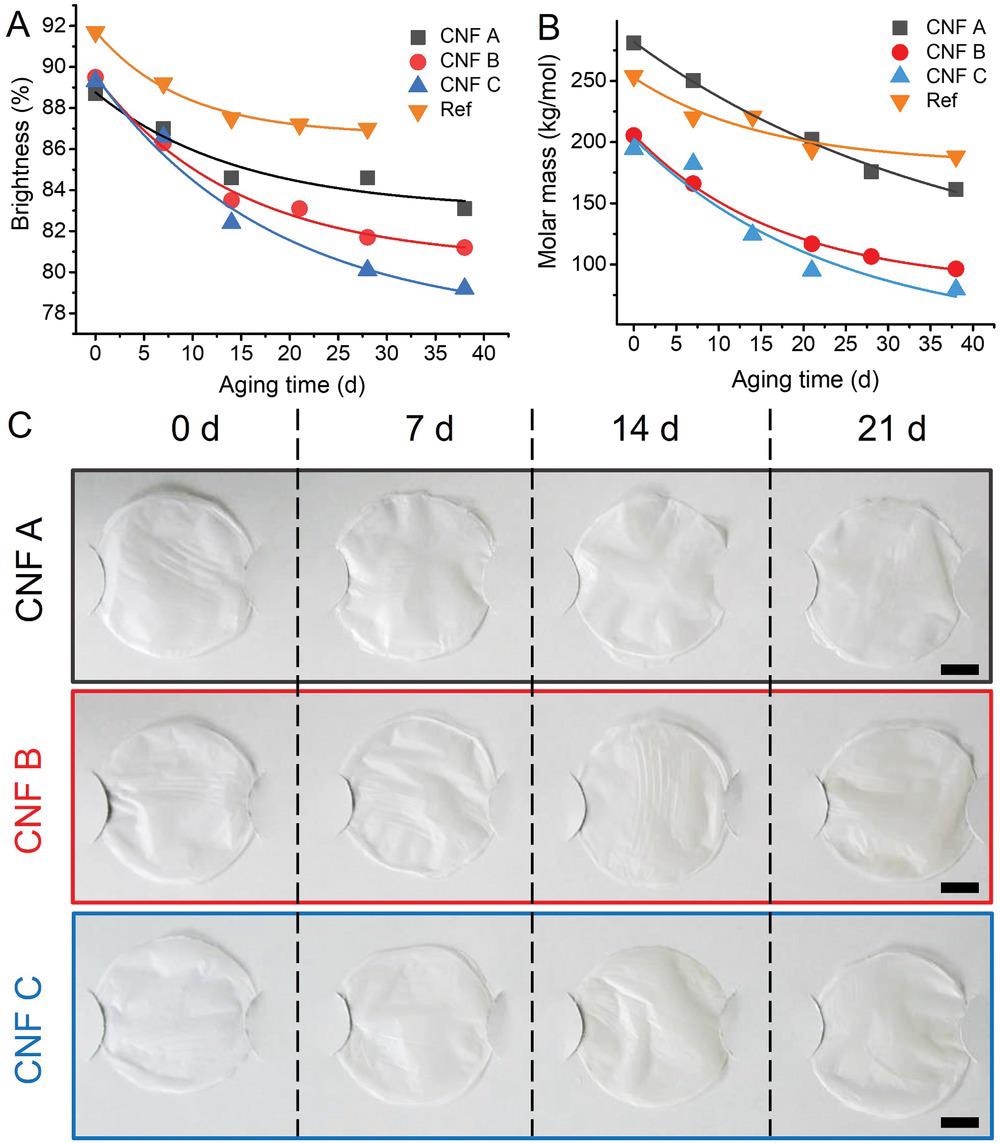Scientists have recently applied cellulose nanofibers to mitigate the fire damage in historic papers. This study has been recently published in Nano-Micro Small.
Importance of Conserving Historical Papers
The Latin proverb “verba volant, scripta manent” has rightly indicated that spoken word flies away but written words stay.
A major part of our culture has been documented in the form of scripts, books, musical scores, drawings, and paintings, which need to be conserved.
The future generations must be given a chance to be inspired by past scripture and learn from the historic data. Hence, it is imperative to preserve historical documents properly.
Historical papers are often damaged by fire and these are far more complex to restore, compared to damages caused by aging or usual wear and tear.
In 2004, a catastrophic fire in the historic library of Duchess Anna Amalia in Weimar, Germany, destroyed a large invaluable collection of hand-written musical literature between the 17th and 19th centuries.
This incident emphasized the importance of developing scientific means to determine the extent of damage caused and preserving the documents as much as possible.
Additionally, the newly developed method must be suitable for high-throughput as thousands of sheets are required to be treated.
How to Conserve and Restore Damaged Papers?
Papers are not only damaged due to direct exposure to the flames but also damaged due to indirect heat effects and the impact of water and other extinguishing agents.
Therefore, papers that are not burnt but indirectly damaged, undergo drastic changes in appearance and physiochemical properties due to a series of chemical processes, such as dehydration, oxidation, hydrolysis, gasification, and cross-linking.
Although the legibility of the manuscripts is greatly deteriorated by charring, it could be partially improved by lamination, digitalization, and multispectral imaging.
The papers retrieved from the Anna Amalia library after the fire have been restored by two methods, namely, the leaf casting of the papers and lamination of the damaged and stabilized paper.
However, historians have pointed out that these methods have reduced the readability of the treated papers.
Papers are also restored using an adhesive mixture of different cellulose ethers, such as carboxymethyl, hydroxypropyl, methyl hydroxyethyl. This method has a lesser impact on optical properties.

New Stabilization Method for Severely Fire-Damaged Manuscripts
Scientists have performed an in-depth analysis of fire-damaged papers, bearing different degrees of fire damages, to understand their chemical and surface properties.
They categorized the chemical and structural changes into L-, M-, and H-heat damage.
Research revealed a progressively increased carbon content in the papers by analyzing the presence of C-C bonds and decrease in C-O bonds. This finding implies the formation of hydrophobic carbon-rich layers on the fire-damaged papers.
The charred papers exhibit structural changes at nano-micro scale, with increased porosity and water sorption. In the less charred areas, the cellulose was found to be affected by both chain cleavage and cross-linking.
The authors used these data to develop a new stabilization method for severely fire-damaged manuscripts and prints. This method is based on the coating of suspensions of aqueous cellulose nanofibers (CNFs) on the damaged papers.
They predominantly selected CNFs owing to their chemical compatibility and low visual effect on surfaces. This stabilization method can restore historical manuscripts for a longer period.
In addition to the porosity, highly charred carbonaceous material contains sites of high-surface energy and polar groups. These enable good wetting, penetration, and adhesion of polar stabilizing agents.
In this study, CNF acts as a reinforcing agent and is applied as a 0.5–1 wt.% aqueous suspension.
Absorption and retention of CNFs occur due to the porosity and the remaining polar groups of the charred material, chemical and structural similarities between less damaged areas of the paper, and CNFs the extraordinary network and film-forming properties of CNFs.
The authors revealed that this method improved the mechanical stabilization of paper without affecting visibility and legibility.
At present, scientists are testing this method to rescue and preserve selected specimens from the ducal collection of musical literature from the remains of Anna Amalia Library.
Conclusion
The newly developed stabilization method involves the coating of the damaged papers with a thin layer of CNFs.
The main advantage of this method is that it enables the preservation of papers as well as retrieval of the contained historical information.
The latter function has been possible because CNF develops a flexible, transparent film on the surface and adheres strongly to the damaged matrix which significantly reduces the fragility of the paper.
Hence, this technique provides stability and facilitates digitization and further handling. In the future, the possibility of applying CNFs by spraying must be studied.
News
Most Plastic in the Ocean Is Invisible—And Deadly
Nanoplastics—particles smaller than a human hair—can pass through cell walls and enter the food web. New research suggest 27 million metric tons of nanoplastics are spread across just the top layer of the North [...]
Repurposed drugs could calm the immune system’s response to nanomedicine
An international study led by researchers at the University of Colorado Anschutz Medical Campus has identified a promising strategy to enhance the safety of nanomedicines, advanced therapies often used in cancer and vaccine treatments, [...]
Nano-Enhanced Hydrogel Strategies for Cartilage Repair
A recent article in Engineering describes the development of a protein-based nanocomposite hydrogel designed to deliver two therapeutic agents—dexamethasone (Dex) and kartogenin (KGN)—to support cartilage repair. The hydrogel is engineered to modulate immune responses and promote [...]
New Cancer Drug Blocks Tumors Without Debilitating Side Effects
A new drug targets RAS-PI3Kα pathways without harmful side effects. It was developed using high-performance computing and AI. A new cancer drug candidate, developed through a collaboration between Lawrence Livermore National Laboratory (LLNL), BridgeBio Oncology [...]
Scientists Are Pretty Close to Replicating the First Thing That Ever Lived
For 400 million years, a leading hypothesis claims, Earth was an “RNA World,” meaning that life must’ve first replicated from RNA before the arrival of proteins and DNA. Unfortunately, scientists have failed to find [...]
Why ‘Peniaphobia’ Is Exploding Among Young People (And Why We Should Be Concerned)
An insidious illness is taking hold among a growing proportion of young people. Little known to the general public, peniaphobia—the fear of becoming poor—is gaining ground among teens and young adults. Discover the causes [...]
Team finds flawed data in recent study relevant to coronavirus antiviral development
The COVID pandemic illustrated how urgently we need antiviral medications capable of treating coronavirus infections. To aid this effort, researchers quickly homed in on part of SARS-CoV-2's molecular structure known as the NiRAN domain—an [...]
Drug-Coated Neural Implants Reduce Immune Rejection
Summary: A new study shows that coating neural prosthetic implants with the anti-inflammatory drug dexamethasone helps reduce the body’s immune response and scar tissue formation. This strategy enhances the long-term performance and stability of electrodes [...]
Scientists discover cancer-fighting bacteria that ‘soak up’ forever chemicals in the body
A family of healthy bacteria may help 'soak up' toxic forever chemicals in the body, warding off their cancerous effects. Forever chemicals, also known as PFAS (per- and polyfluoroalkyl substances), are toxic chemicals that [...]
Johns Hopkins Researchers Uncover a New Way To Kill Cancer Cells
A new study reveals that blocking ribosomal RNA production rewires cancer cell behavior and could help treat genetically unstable tumors. Researchers at the Johns Hopkins Kimmel Cancer Center and the Department of Radiation Oncology and Molecular [...]
AI matches doctors in mapping lung tumors for radiation therapy
In radiation therapy, precision can save lives. Oncologists must carefully map the size and location of a tumor before delivering high-dose radiation to destroy cancer cells while sparing healthy tissue. But this process, called [...]
Scientists Finally “See” Key Protein That Controls Inflammation
Researchers used advanced microscopy to uncover important protein structures. For the first time, two important protein structures in the human body are being visualized, thanks in part to cutting-edge technology at the University of [...]
AI tool detects 9 types of dementia from a single brain scan
Mayo Clinic researchers have developed a new artificial intelligence (AI) tool that helps clinicians identify brain activity patterns linked to nine types of dementia, including Alzheimer's disease, using a single, widely available scan—a transformative [...]
Is plastic packaging putting more than just food on your plate?
New research reveals that common food packaging and utensils can shed microscopic plastics into our food, prompting urgent calls for stricter testing and updated regulations to protect public health. Beyond microplastics: The analysis intentionally [...]
Aging Spreads Through the Bloodstream
Summary: New research reveals that aging isn’t just a local cellular process—it can spread throughout the body via the bloodstream. A redox-sensitive protein called ReHMGB1, secreted by senescent cells, was found to trigger aging features [...]
AI and nanomedicine find rare biomarkers for prostrate cancer and atherosclerosis
Imagine a stadium packed with 75,000 fans, all wearing green and white jerseys—except one person in a solid green shirt. Finding that person would be tough. That's how hard it is for scientists to [...]





















